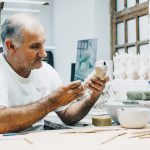Over the years in career conversations, I have encouraged my clients to think big picture and explore options based on how global narratives are reframing the future of work. For some time now, near the top of the list has been the impact of aging demographics and its effect on economic and social structures.
One strand, as outlined in The 100-Year Life by Lynda Gratton, is the changing patterns in living and working in an age of longevity. A second strand is a shift in consumer needs as we age and the opportunity to access new markets, work and careers in what has been identified as the multi-billion-dollar longevity economy.
What is the longevity economy, anyway?
Let’s start with the largely accepted definition from the 2016 Oxford Economics/AARP report: “The sum of all economic activity driven by the needs of Americans aged 50 and older, including both the products and services they purchase directly and the further economic activity this spending generates.”
In Europe, the term silver economy is used with a similar definition that I favour: “Part of the economy that concerns Europe’s older citizens … includes all the economic activities relevant to the needs of older adults, and the impact on many sectors.” (For an excellent read, try this 2014 piece – The Silver Economy as a Pathway for Growth, a collaborative effort between the OECD, the Global Coalition on Aging and the University of Oxford.)
Direct consumer economic activity includes obvious products and services that older adults purchase for themselves or their older parents, such as financial and estate planning, home care, retirement or long-term care residences. Naturally, a 50-plus consumer purchases items common at any age, from groceries to cars, travel to entertainment, though their needs and buying motivations change at different points during their later-life course.
Longevity economy, an intergenerational consumer narrative
The economic growth of the longevity economy assumes that the trend of rising life expectancy (at its highest level now) will continue for decades to come. But a 50-plus cohort didn’t just appear last week. My earliest encounter with the longevity economy was in the 1980s, with marketing in the retail sector, when senior’s discounts and consumer shows became popular. Though not that sophisticated, these early tactics at least recognized there was a significant market to target.
Fast forward to today where we see an expanding 50-plus demographic curve. Joseph Coughlin’s seminal book The Longevity Economy: Unlocking the World’s Fastest Growing, Most Misunderstood Market is a great starting point to research for business ideas, and for future work and career opportunities. As you will discover, there are many markets, consumer and non-consumer facing, that make up the longevity economy.
Framing this opportunity solely as a boomers story is a common misconception of the longevity economy. As of 2019, a 50-plus market includes Gen-X, and by 2030, it will welcome the first millennials, who will then be turning 50. Can you imagine how profiling a 50-plus consumer might change? As a career advisor, you might suggest as a career opportunity the need for marketing specialists innovating an intergenerational consumer narrative.
Moving to a more “compassionate economy”
“The more compassionately gifted people we have employed full time as caregivers, the more socially influential their qualities will become.” Theodore Roszak, Longevity Revolution
The economic and social value of the longevity economy to various professions is constantly being redefined. In the decade ahead, expect its global worth to be evaluated using criteria outside economic activity as we know it, and most certainly driven by more than one generation’s expectations and experiences. Work in social policy development related to health care, pensions and life-long education will be as important as work in elder law and advocacy to protect people from fraud and abuse.
As we move toward a “compassionate economy” described by Theodore Roszak, where the focus of services will be directed more to ensuring people’s well-being as they age, the business opportunities and careers list will look a lot different.
For instance, servicing human needs, such as caring for aging parents, is most often volunteer work or personal duty. There is a breaking point, where innumerable hours dedicated to these care activities need to be economically valued. If we demand more paid personal home and health-care service workers, we will have to pay better for those careers and re-calibrate their value, too.
What more can the longevity economy provide in work and career opportunities?
Here are two core areas, which are interconnected.
Technology-design careers
Technology now augments the work of gerontologists, medical professionals and related support workers. Interesting careers in Gerontechnology have emerged in recent years. This is an example of where inter-disciplinary expertise takes us to the future. Mobility and wearable devices, AI, robotics, sensors, mobile apps, virtual reality – all these things are in play within the realm of technology design and healthy aging. AGE-WELL Canada’s technology and aging network is one example of where projects are happening.
Housing-design Careers
Repositioning work in urban planning, architecture, interior design, construction and real estate will steadily progress, as older adults seek or self-initiate new housing options, addressing the desire to age in place. Further driving change in these occupations will be a shared intergenerational need for affordable housing, influenced by trends such as home sharing, smart technology in home design and overall innovative community design.
In closing, it is worthy of note for influencers in the career development field that in the longevity economy, older adults are economically active in another way – by working longer beyond a full-time work life, in part-time or short-term contracting or new entrepreneurial endeavours. As the 2014 OECD report noted above submits, “New, flexible models for careers and pensions can encourage people to work longer and plan better for the future.”
To expand your research on work and careers in a longevity economy, here are other links to get you started.
- Resources for Interdisciplinary Career Possibilities Exploring Careers in Aging Roadmap
- Career Opportunities in Gerontology in Canada
- Simon Fraser University – Aging, Design, and the City






